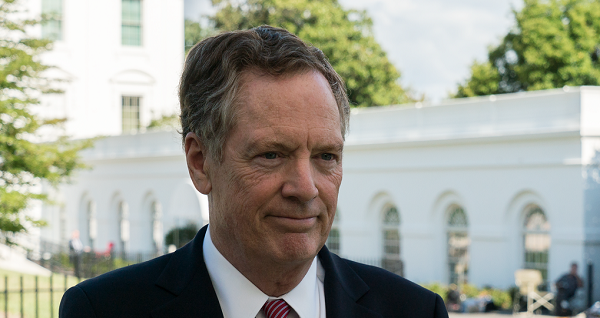US-China trade talks end
February 16, 2019 | Expert Insights

US and Chinese trade negotiators will meet again in the last week of February in Washington, President Xi Jinping said, after the sixth round of cabinet-level negotiations ended in Beijing with no sign of substantial progress.
Background
The United States and China are two of the largest economies in the world. Both countries consider the other as a partner in trade and an adversary in geopolitics. Diplomatic relations between the US and China was first established in 1844 with the Treaty of Wanghia. This agreement allowed the US to trade in Chinese ports.
The U.S.–China Strategic and Economic Dialogue was created in 2009. Every year, high-level representatives from both nations open up dialogue to improve economic partnership. In 2017, the meetings that occurred were reported as being “tense”. Upon conclusion, the two countries cancelled a joint press conference and did not release a statement. They also did not release a plan of action.
The latter half of 2018 saw a mutual halt on imposing new tariffs and a preliminary agreement for ministerial-level talks to sort out trade issues. The deadline to establish a new trade framework was set as March 1, 2019. The tariffs are frozen until the deadline, after which, they will be automatically reimposed by both countries.
Analysis
According to the White House, Robert Lighthizer, the US trade representative, and Treasury secretary Steven Mnuchin said progress had been made on difficult issues but “there is still lots of work to do”. The two sides were meeting after President Donald Trump insisted that far-reaching structural economic reforms had to be part of any “real deal” to end the trade war between the world’s two biggest economies.
Mr. Xi’s comments were reported by the official Xinhua News Agency after he sat down with the US negotiating team on Friday, reciprocating Mr. Trump’s courtesy meeting with China’s top economic official Liu He in Washington last month. “China and the US are inseparable,” Mr. Xi was quoted as saying. “They both do well or they both get hurt. Co-operation is the best choice.”
The impasse has raised pressure on Mr. Trump to delay a scheduled increase in tariffs on March 2 to facilitate a possible make-or-break summit meeting with Mr Xi. If an agreement is not reached by March 1, Mr. Trump said he would raise the punitive tariff rate on $200bn of Chinese imports from 10 per cent to 25 per cent.
According to people briefed on the negotiations, both sides had hoped to at least produce a memorandum of understanding by the end of Friday. When Mr. Lighthizer and Mr. Liu held their last round of trade talks in January, both sides failed to come up with a draft document as a basis for further discussions.
Investor uncertainty over the outcome of the talks weighed on stock markets across Asia. The CSI 300 index of companies listed in Shanghai and Shenzhen closed 1.9 per cent lower, while Hong Kong’s Hang Seng index dropped by almost 2 per cent.
The people briefed on the negotiations added that Chinese officials had promised over recent days to provide a full list of all central and local government subsidies in accordance with World Trade Organization reporting requirements. They would also take steps to ensure that the subsidies did not violate WTO rules.
Chinese officials were angered by what they saw as US efforts to undermine their state-led economy and the Trump administration’s campaign to ban Huawei, the Chinese telecoms group, from participating in the development of 5G networks overseas. They were also reluctant to agree to any post-deal enforcement mechanisms that would allow the US to maintain or re-impose existing tariffs on Chinese imports.
Assessment
Our assessment is that if the hawks in the Trump administration get their way, it might lead to a temporary disengagement of the two economies. We feel Beijing will allow the Chinese Yuan to passively devalue in order to cope with the impact of the U.S. tariffs, although authorities will likely blame any decline in the currency on the markets.
India Watch
We believe that the trade war will put pressure on the Indian economy as the cost of production will rise due to the increased price of raw material. We also believe that this can impact both the parity of the Indian rupee and the trade deficit.
Read more:








Comments